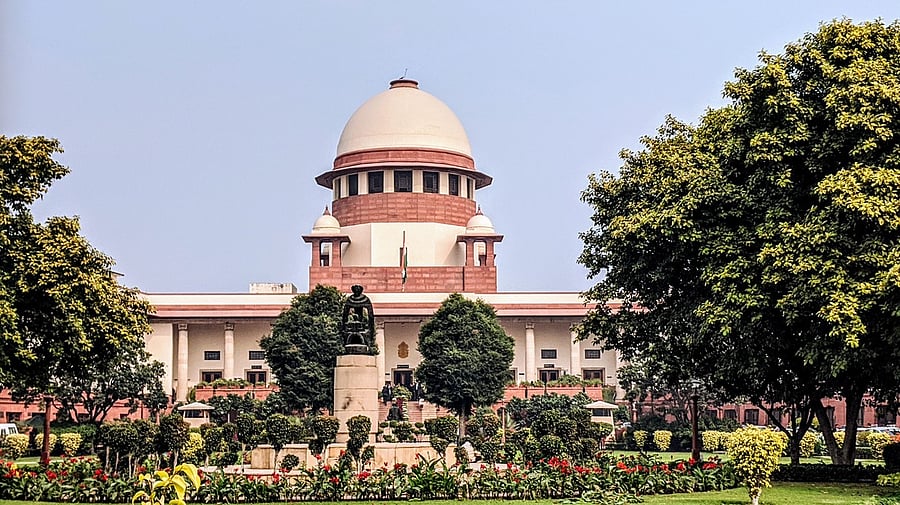
The Supreme Court of India.
Credit: iStock Photo
New Delhi: The Supreme Court on Thursday emphasised its previous direction that the mining within the national park and wildlife sanctuary and within an area of one kilometre from the boundary of such areas would not be permissible.
A bench of Chief Justice of India B R Gavai and Justice K Vinod Chandran directed the Jharkhand government to declare the area comprising of 126 compartments in Saranda forest area as notified in 1968 order, excluding six compartments, as a wildlife sanctuary within a period of three months.
The court pointed out, the Saranda forest area is undisputedly one of the most pristine Sal forests in the world. It is a biodiversity hotspot, interconnected with forests in the States of Odisha and Chhattisgarh, creating a contiguous wildlife corridor.
The region is rich in biodiversity and wildlife and includes within its confines the critically endangered and endemic Sal Forest Tortoise, four horned antelope, Asian palm civet, wild elephants, leopards, sambar and chital deer, bison, barking deer, and numerous species of birds and reptiles, the bench noted.
In its 71-page judgment, the court directed the state government to give wide publicity to the fact that, neither the individual rights nor the community rights of the tribals and the forest dwellers in the said area would be adversely affected.
"The State shall also give wide publicity to the fact that in view of the provision of Section 3 read with sub-Section (1) of Section 4 of the FRA (Scheduled Tribes and Other Traditional Forest Dwellers (Recognition of Forest Rights) Act, 2006) all the rights of the tribals and the forest dwellers both individually as well as of community shall stand protected,'' the bench said.
The court held that the bogey that on declaration of wildlife sanctuary, the habitations and rights of the tribals and traditional forest dwellers will be lost and vital public infrastructures like educational institutions, roads, etc, will have to be demolished is only a figment of imagination of the State.
"Rather than taking such a stand before this court, we are of the considered view that the State should have educated the tribals/forest dwellers residing in the said areas about the rights available to them under the FRA as well as the WPA (Wildlife Protection Act),'' the bench said.
Finding that the State has been changing its stand time and again, the bench said it could see no reason as to why the entire area of 126 compartments notified under 1968 notification should not be declared as wildlife sanctuary. However, it permitted the State to exclude the six compartments.
The court also reiterated the directions issued on April 26, 2023.
"The mining activities within an area of one kilometre of the boundary of the protected areas will be hazardous for the wildlife. Though in the case of Goa Foundation case, the said directions were issued in respect of State of Goa, we find that such directions need to be issued on Pan-India basis,'' the court then said.
The court then also directed that mining within the national park and wildlife sanctuary and within an area of one kilometre from the boundary of such national park and wildlife sanctuary would not be permissible.
